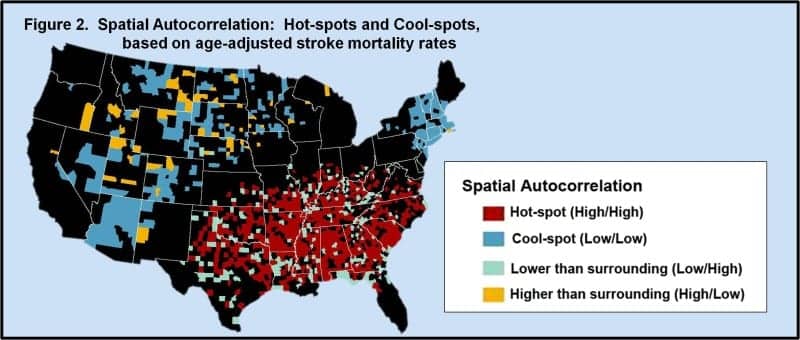Stroke researchers from the Perelman School of Medicine at the University of Pennsylvania have created a map showing geographic hotspots of increased stroke mortality across the United States, which was unveiled recently at the American Academy of Neurology’s 66th Annual Meeting. According to a Perelman School of Medicine at the University of Pennsylvania news release, clusters of “hot spots”, defined as counties where the mortality rate from stroke was as much as 40% higher than the national average and 1.5 times higher than mortality of patients in “cool” spots, were found in the southeastern US.
These “hot” spots also extended farther west and north than the traditionally defined “stroke belt.” Researchers also found isolated areas of low stroke mortality clustered within hot spots and isolated areas of high stroke mortality clustered within cool spots. The Perelman School of Medicine news release notes that researchers hope to identify hot spots that would benefit from targeted interventions to increase access to optimal stroke care, while accounting for demographics, population density, and existing healthcare resources.
In a second study that examined stroke treatment disparities, the research team identified that women are less likely to receive clot-busting recombinant tissue plasminogen activator (rt-PA) than men at both Primary Stroke Centers and non-Primary Stroke Centers, though the difference was small. Previous studies have suggested that women receive lower quality stroke care, are more likely to be disabled after stroke than men, and are less likely to receive acute stroke therapies.
The Perelman School of Medicine news release notes that further research can investigate any differences in rt-PA eligibility, stroke severity, or time to presentation by sex.
Photo Appears Courtesy of Penn Medicine/Michael Mullen
Source: Perelman School of Medicine at the University of Pennsylvania





